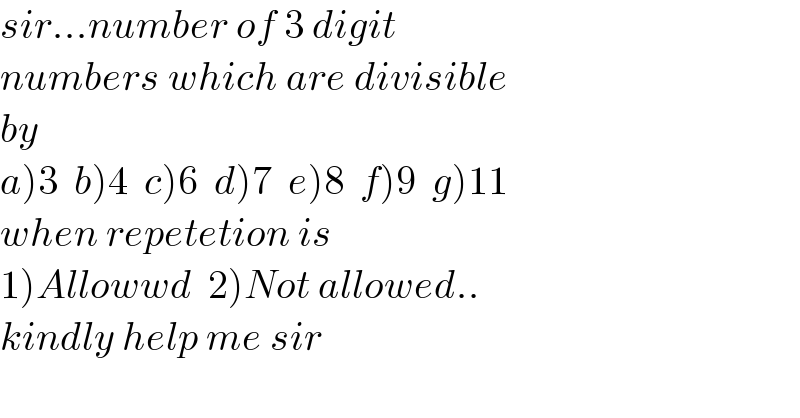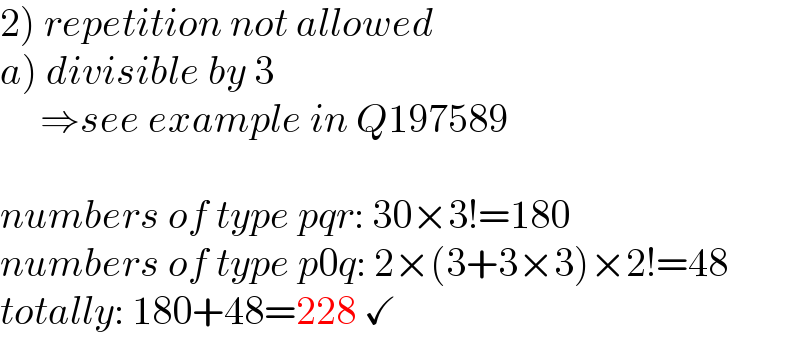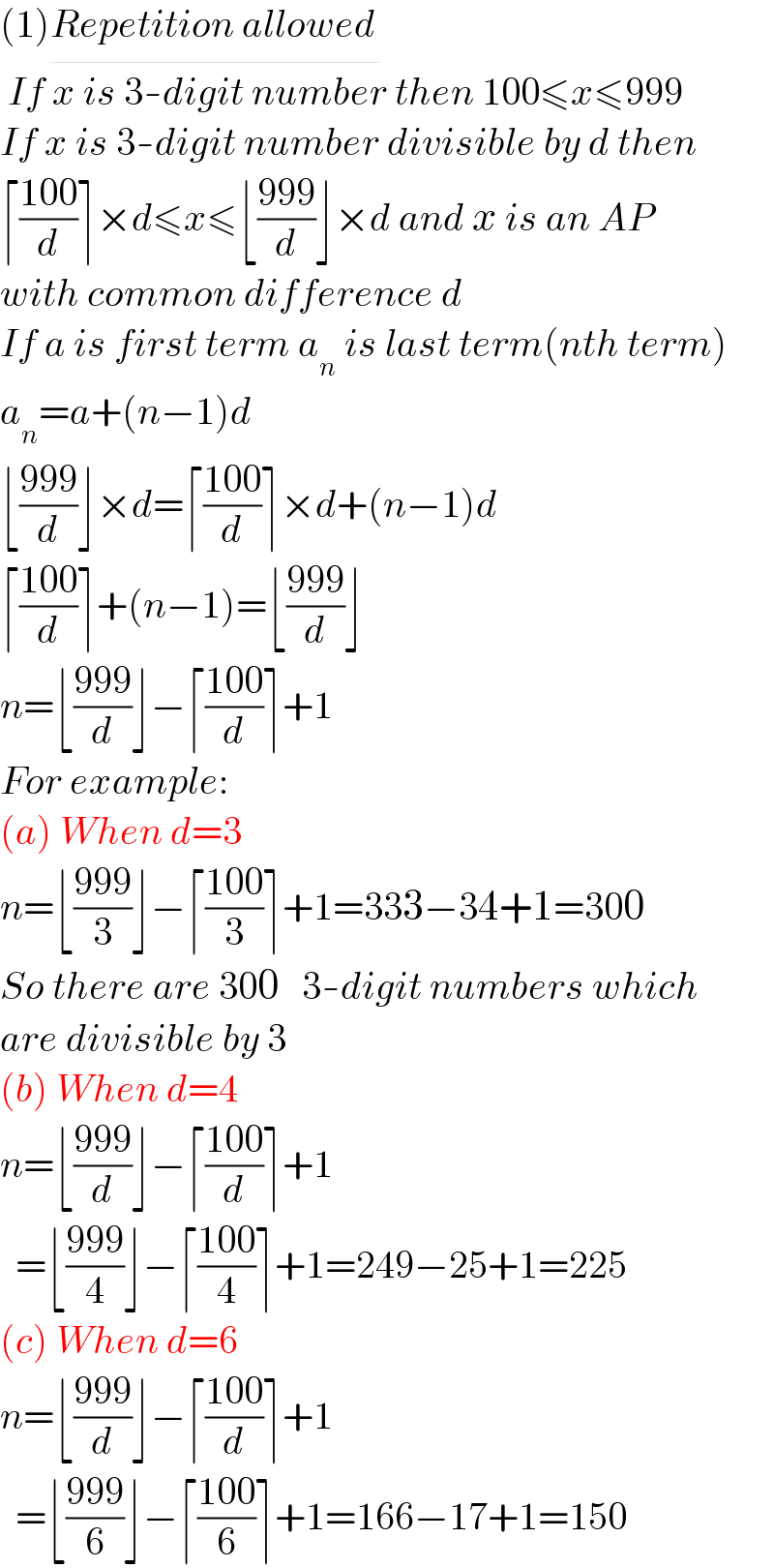Question Number 197564 by SLVR last updated on 21/Sep/23

Commented by Tinku Tara last updated on 21/Sep/23

Commented by SLVR last updated on 21/Sep/23

Commented by JDamian last updated on 22/Sep/23
![In the case 1), [A] the 3−digit numbers span 100 to 999. [B] the numbers which are divisible by n appears every n positions. With these hints I presume you are smart enough to calculate the values you asked for.](https://www.tinkutara.com/question/Q197571.png)
Commented by mr W last updated on 24/Sep/23

Answered by Rasheed.Sindhi last updated on 22/Sep/23

